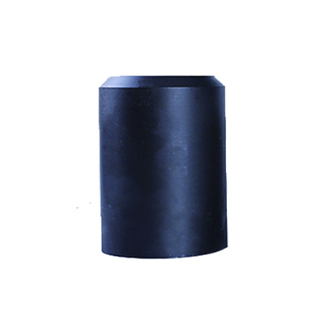- Afrikaans
- Albanian
- Amharic
- Arabic
- Armenian
- Azerbaijani
- Basque
- Belarusian
- Bengali
- Bosnian
- Bulgarian
- Catalan
- Cebuano
- Corsican
- Croatian
- Czech
- Danish
- Dutch
- English
- Esperanto
- Estonian
- Finnish
- French
- Frisian
- Galician
- Georgian
- German
- Greek
- Gujarati
- Haitian Creole
- hausa
- hawaiian
- Hebrew
- Hindi
- Miao
- Hungarian
- Icelandic
- igbo
- Indonesian
- irish
- Italian
- Japanese
- Javanese
- Kannada
- kazakh
- Khmer
- Rwandese
- Korean
- Kurdish
- Kyrgyz
- Lao
- Latin
- Latvian
- Lithuanian
- Luxembourgish
- Macedonian
- Malgashi
- Malay
- Malayalam
- Maltese
- Maori
- Marathi
- Mongolian
- Myanmar
- Nepali
- Norwegian
- Norwegian
- Occitan
- Pashto
- Persian
- Polish
- Portuguese
- Punjabi
- Romanian
- Russian
- Samoan
- Scottish Gaelic
- Serbian
- Sesotho
- Shona
- Sindhi
- Sinhala
- Slovak
- Slovenian
- Somali
- Spanish
- Sundanese
- Swahili
- Swedish
- Tagalog
- Tajik
- Tamil
- Tatar
- Telugu
- Thai
- Turkish
- Turkmen
- Ukrainian
- Urdu
- Uighur
- Uzbek
- Vietnamese
- Welsh
- Bantu
- Yiddish
- Yoruba
- Zulu
casing pup joint
Understanding Casing Pup Joints An Essential Component in Oil and Gas Drilling
In the complicated world of oil and gas drilling, each component plays a crucial role in ensuring efficiency and safety. One such component that is often overlooked yet essential is the casing pup joint. This article will delve into the purpose, characteristics, and significance of casing pup joints in the drilling industry.
What is a Casing Pup Joint?
A casing pup joint is a short length of pipe used to connect the casing strings in a wellbore. Typically, these joints are made of carbon steel and are designed to accommodate various sizes of drilling and casing pipes. While they may appear simple in structure, their role is pivotal in ensuring the integrity of the wellbore and the overall drilling operation.
Casing pipelines serve multiple functions, including providing structural support to the well, preventing the collapse of the wellbore, and isolating different geological formations. The pup joint comes into play in situations where standard lengths of casing cannot be used, such as when adjustments in the total depth of the well are required or when specific adjustments need to be made to the casing string.
Characteristics of Casing Pup Joints
Casing pup joints are designed with specific characteristics that cater to the demanding environment of drilling operations. They typically have the same outer diameter as the casing strings they connect, ensuring consistency and compatibility. The most common sizes of casing pup joints range from 2 to 10 feet in length, although custom lengths can be manufactured based on the operational needs.
Moreover, pup joints are available in various grades of steel, depending on the pressure and temperature conditions they will face during drilling. Their ends are usually threaded, allowing for easy and secure connections between casing sections. The installation of pup joints is straightforward, typically requiring fewer tools and equipment compared to other casing components.
casing pup joint

Importance in Drilling Operations
One of the primary reasons casing pup joints are critical in drilling operations is their role in maintaining well integrity. Properly installed pup joints help prevent fluid migration between different geological layers, safeguarding against potential blowouts or well failure. Additionally, during drilling operations, the use of pup joints allows for more precise control over the well's total depth, which is essential for achieving the desired drilling objectives.
Furthermore, casing pup joints facilitate the installation of downhole tools and equipment, improving operational efficiency. Whether it’s a completion assembly, a packer, or a monitoring device, the ability to adjust casing lengths using pup joints makes it easier to adapt to different drilling scenarios.
Challenges and Considerations
While casing pup joints play an indispensable role, they are not without their challenges. One of the significant concerns is the potential for corrosion, particularly in environments with high salinity or acidic conditions. It is crucial for operators to select the appropriate material grade for pup joints, considering the specific conditions of the drilling site.
Another challenge is the risk of improper installation, which can lead to leaks or failures in the casing string. Ensuring that personnel are adequately trained in the handling and installation of casing pup joints is vital. Regular inspections and maintenance should also be part of any drilling operation's routine to ensure that all components are functioning correctly.
Conclusion
In summary, casing pup joints are fundamental components in oil and gas drilling operations. Their role in connecting casing strings, maintaining well integrity, and facilitating the installation of downhole equipment emphasizes their importance in a successful drilling operation. Although they may be small in stature compared to other components of the drilling string, their impact on overall operational efficiency cannot be underestimated. By understanding their characteristics, importance, and associated challenges, drilling operators can make informed decisions that enhance the safety and effectiveness of their operations. The efficient use of casing pup joints represents not only a technical necessity but also a commitment to excellence within the oil and gas industry.
-
Well Casing Extension Couplings – Applications and InstallationNewsJun.06,2025
-
Types of Crossover Subs in Drilling & CompletionNewsJun.06,2025
-
Key Features of High-Quality Tubing Pup JointsNewsJun.06,2025
-
Installation and Maintenance Tips for Steel Couplings for PipeNewsJun.06,2025
-
How to Select the Right Pup Joint for Oil & Gas OperationsNewsJun.06,2025
-
Applications of Stainless Steel Pipe CouplingsNewsJun.06,2025







